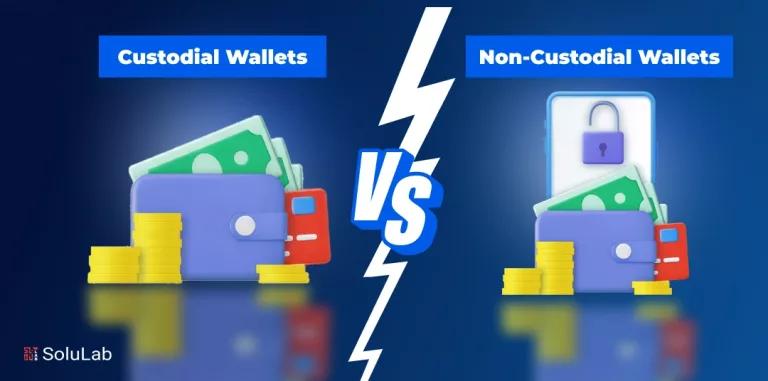
Cryptocurrency at checkout is no longer a novelty; it is fast becoming a differentiator, and soon, it will be table stakes. When the first online merchants added a Bitcoin button back in 2014, it felt experimental. In 2025, mainstream processors such as PayPal, Stripe, and Adyen have rolled out crypto or stable-coin pilots, and governments from Singapore to the UAE are writing clear rules for digital-asset businesses. If you operate an online store and still rely exclusively on cards and traditional wallets, you are voluntarily limiting both reach and margin.
Below are seven fully expanded, evidence-based reasons why every forward-thinking e-commerce brand should add crypto payment services before the next holiday rush.
Borderless Payments Remove Geographic Friction
Revenue loves simplicity; every extra field or redirect in a cross-border checkout drives cart abandonment up. Traditional payment rails still lean on country-specific acquiring banks, regional fraud models, and foreign-exchange markups that introduce delay and uncertainty. Crypto transactions travel on public blockchains that treat a wallet in Tokyo the same as one in Toronto, allowing you to serve the globe from a single integration point.
Gateway software does the heavy lifting: when a customer pays in Ether, the service can automatically convert that amount to the currency you settle in, whether that’s dollars, euros, or a stablecoin. Shoppers see a single total, confirm the transaction in their wallet app, and receive an on-chain receipt within minutes. You see the fiat equivalent in your dashboard almost instantly, and nightly, sometimes hourly, settlement wires land in your business bank account. Border controls become UI choices, not legacy banking limitations.
Lower Processing Costs Free Up Margin
Card processors generally charge somewhere between 2.5% and 3.5% plus a fixed fee. Those pennies on every dollar fund fraud protection, loyalty schemes, interchange splits, and bank network overhead. A well-architected crypto gateway routes the same sale over networks where the base fee is often measured in tenths of a cent.
For a concrete scale, consider this benchmark: online merchants pay an average of 2.9 % in card fees on each domestic order (Nilson Report). By contrast, sending $100 worth of USDConaLayer – 2 network, such as Arbitrum or Polygon, can cost under 0.01 in network fees. Even after the gateway adds a 0.5% conversion spread, your blended cost may land below 1%. Retailers dealing in low-margin essentials or high-volume micro-transactions will feel the savings most acutely. Thousands saved on processing fees is cash that can amplify your ad spend, accelerate product R&D, or offset rising shipping costs.
Chargeback Immunity Slashes Fraud Overhead
Ask any merchant what keeps them awake at night, and “chargebacks” will be near the top of the list. Card-not-present fraud cost global businesses more than $20 billion last year, and a sizable share stemmed from so-called “friendly fraud” customers who knowingly dispute a legitimate transaction. On most blockchains, once a payment hits the required number of confirmations, it is final. There is no issuing bank to wage a dispute through, and no acquirer to debit funds from your account weeks after fulfillment.
That doesn’t mean crypto removes customer rights; it simply returns control over refunds to you. If a genuine shipping mishap occurs, you can push a refund straight from the gateway’s dashboard. The absence of involuntary chargebacks also means no rolling reserves or post-funding holds. Your cash flow remains intact, and your support team spends its time building relationships rather than drafting rebuttal letters.
Faster Settlement Keeps Capital Working
The time value of money is real. Card networks typically batch throughout the day, then release funds within two business days longer if a weekend or holiday intervenes. Marketplace platforms may extend that delay to a week or more. Crypto processors generally allow you to choose your settlement cadence, and many now offer same-day bank wires even on Saturday.
That accelerated liquidity changes how aggressively you can operate. Real-time reinvestment into paid ads can capitalize on viral moments, and faster replenishment cycles reduce stock-out risk for trending items. If you prefer to hold a slice of your revenue in crypto as a treasury diversification play, you can disable auto-conversion and sweep the assets directly to cold storage wallets, effectively bypassing the banking system altogether.
Tapping into a Young, High-Spending Demographic
A lingering misconception is that crypto owners are fringe traders hoarding tokens purely for speculation. The demographics tell a different story. According to Pew Research’s survey, 16% of U.S. adults and nearly 35% of those aged 18-34 have owned or used cryptocurrency. That age bracket now eclipses Millennials and Gen Z combined in spending power, and it disproportionately values frictionless digital experiences.
Crypto holders often treat asset gains as “house money,” which leads to larger cart sizes and a willingness to splurge on upgrades like expedited shipping or bundle add-ons. Just as Apple Pay initially drew higher-income iPhone owners who liked tap-to-pay novelty, a BTC or USDC option draws an audience that actively seeks merchants aligned with its tech-forward values. Position your brand early, and you will acquire customers with above-average lifetime value before competitors even notice the land grab.
Built-In Marketing Differentiation
In crowded verticals, differentiation traditionally boils down to price wars or faster shipping. Accepting cryptocurrency gives you a fresh lever that also doubles as a publicity magnet. Announce a “Now Accepting Bitcoin” banner, and crypto news aggregators, social media influencers, and dedicated subreddit communities often pick it up organically. That buzz drives incremental traffic at a cost approaching zero.
Brands that lean forward can take this a step further and reward loyalty with blockchain-based perks: exclusive NFTs that grant discounts or early access to product drops, token-gated coupons that can be used in partner stores, or coupons on chain. These programs combine marketing and usefulness and establish you as an innovator and not just another discount-code spammer.
Future-Proofing Your Tech Stack
Fintech is a wave: magnetic stripe, then EMV chip, and then contactless wallets. The next leap is being brought about by stablecoins, Layer-2 networks, and wallet-native identity. The current move to integrate a crypto gateway is comparable to the implementation of an EMV-capable terminal in 2013. You can only do a few chip transactions at first, but you do not do a painful retrofit when use becomes mainstream.
Regulatory landscapes are also clarifying. The EU’s MiCA framework and multiple U.S. state Money Transmitter Licenses give compliant gateways a durable legal footing. By plugging into a provider that meets those standards today, you set yourself up for effortless adoption of whatever innovations come next, whether that’s real-time payroll via stablecoins for your freelancers or loyalty tokens convertible across a retail coalition.
Implementation Blueprint (Without the Headaches)
While the reasons above make a compelling strategic case, execution still matters. Below is a streamlined blueprint designed for busy e-commerce teams that can’t afford multi-quarter tech projects.
- Select a well-documented compliant gateway. Check on licensing, audit history, and API robustness. Examples of names that should be shortlisted include Coinbase Commerce, BitPay, or Stripe crypto beta.
- Complete business verification. Expect to upload incorporation papers and an executive’s ID roughly what any acquirer asks during underwriting.
- Define your treasury approach. Decide whether you want a full fiat conversion, a blended strategy, or to retain 100% crypto. All mainstream gateways allow granular toggling per currency.
- Integrate via native plug-ins or REST API. Shopify, WooCommerce, and BigCommerce plug-ins can be live in under an hour. A custom cart may need a sprint of engineering time, but the SDKs are mature.
- Run end-to-end tests. Place a low-value order, process a refund, and confirm deposit timing. Ironing out UX kinks before launch prevents support requests later.
- Launch and promote. Update checkout banners, home-page badges, and transactional emails. A short press release to crypto trade outlets can generate immediate backlinks and community goodwill.
The entire cycle from signing up to the first real sale often fits inside a single work week.
Final Word
E-commerce margins are won and lost in incremental gains: a lower fee here, a faster settlement there, a new customer cohort discovered early. Crypto payment services deliver improvements across all those fronts while positioning your brand as a modern, innovative retailer. You need not swing for the fences; start small, track the data, and iterate. Early adopters are already enjoying higher-value baskets, near-instant cash flow, and a dramatically lower fraud bill.
As the next generation of shoppers graduates from speculative dabbling to mainstream usage, the merchants who already speak their payment language will capture disproportionate market share. The clock, as they say, is ticking integrate now, and future-proof your growth engine before your competitors even download the plug-in.




